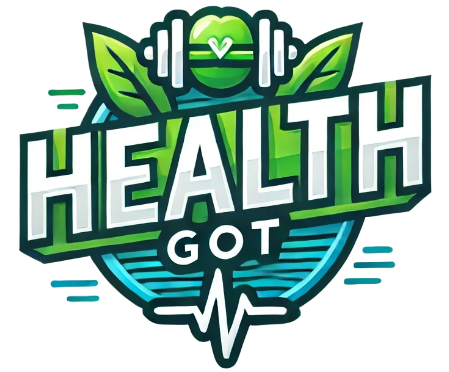Table of Contents
For far too long, the conversation around mental health has inadvertently, and sometimes quite deliberately, tiptoed around men. We’ve built societal constructs of stoicism and strength that, while admirable in some contexts, have become gilded cages, trapping men in a cycle of silence when it comes to their emotional and psychological wellbeing. But the tide, thankfully, is turning. And at the forefront of this crucial shift is Men’s Mental Health Month, a dedicated time to amplify the voices, share the stories, and champion the cause of mental wellness for men everywhere.

So, what exactly is Men’s Mental Health Month? It’s an annual observance, typically marked in June in many countries, though some also highlight it in November (often in conjunction with Movember, which focuses on men’s health more broadly, including mental health). Its core purpose is to bring focused attention to the unique mental health challenges faced by men, to dismantle the stigmas that prevent them from seeking help, and to promote a culture where it’s not just okay, but encouraged, for men to talk about their feelings and access support. The importance of this dedicated month cannot be overstated. It’s a beacon, a rallying point, and a vital reminder that mental health is not a gendered issue, but a human one. Raising awareness is the first, critical step towards fostering understanding, empathy, and ultimately, life-saving action. We’re not just talking about feeling a bit down; we’re talking about a silent crisis that has been claiming lives and diminishing the quality of life for countless men, their families, and their communities.
The Weight of Silence: Why We Must Focus on Men’s Mental Health
Let’s not mince words: the statistics surrounding men’s mental health are stark and deeply concerning. For instance, research consistently shows that while women may report higher rates of depression and anxiety, men are significantly less likely to seek help. The National Institute of Mental Health (NIMH) indicated that in 2022, over one in five U.S. adults lived with a mental illness. More specifically, reports from 2024 highlight that nearly 1 in 10 men experience depression or anxiety, yet less than half seek treatment. Tragically, this often culminates in the most devastating outcomes; men are alarmingly overrepresented in suicide statistics. In the UK, for example, a staggering 76% of suicides are by men, and it’s the leading cause of death for men under 35. In the US, men are four times more likely than women to die by suicide. These aren’t just numbers; they are fathers, brothers, sons, partners, and friends whose struggles too often go unnoticed or unaddressed until it’s too late. The impact of this hidden crisis is profound, contributing to an estimated trillion dollars in lost productivity globally each year, according to Spring Health.

Why this disparity? A complex web of societal pressures and deeply ingrained stigmas plays a significant role. From a young age, many men are conditioned to believe that expressing vulnerability is a sign of weakness. The ‘man up’ culture, the expectation to be the unshakeable provider, the strong and silent type – these outdated yet persistent narratives create formidable barriers. Admitting to struggling, to feeling overwhelmed, or to needing help can feel like a betrayal of these masculine ideals. This internal conflict, coupled with a fear of judgment or ridicule, often forces men to suffer in silence. The impact of untreated mental health issues is far-reaching. It doesn’t just affect the individual man; it ripples outwards, straining relationships with families, impacting performance and safety in workplaces, and diminishing the overall health and vibrancy of our communities. Recognizing and addressing these issues during Men’s Mental Health Month is a crucial step towards changing this narrative.
Navigating the Labyrinth: Common Mental Health Challenges Men Face
It’s crucial to understand that mental health challenges aren’t monolithic; they manifest differently in different people, and certain conditions are particularly prevalent or present uniquely in men. While the experience is always individual, recognizing these common patterns is a key part of fostering understanding and providing targeted support during Men’s Mental Health Month and beyond.
Depression and anxiety are often perceived as conditions more openly discussed by women, but they are incredibly common among men. However, men might exhibit symptoms differently. Instead of sadness, depression in men might manifest as anger, irritability, or aggression. They might throw themselves into work, engage in reckless behavior, or complain of physical symptoms like fatigue or chronic pain. Anxiety, too, can be masked, sometimes appearing as a need for control, excessive worry about providing for their family, or physical symptoms like digestive issues or muscle tension.

Substance abuse is another significant concern. For some men, alcohol or drugs become a way to self-medicate, to numb emotional pain, or to cope with undiagnosed or untreated mental health conditions like depression or anxiety. What might start as a way to unwind or fit in can escalate into a dangerous dependency, creating a vicious cycle that exacerbates underlying mental health issues and creates new physical and social problems. The link between substance abuse and mental health is undeniable, and it’s a critical area of focus.
Post-Traumatic Stress Disorder (PTSD), while often associated with combat veterans, can affect any man who has experienced or witnessed a traumatic event. This could include accidents, assaults, natural disasters, or childhood trauma. Symptoms can include flashbacks, nightmares, severe anxiety, and uncontrollable thoughts about the event. Men, again due to societal expectations around toughness, might be particularly hesitant to acknowledge the impact of trauma or seek help for PTSD, leading to prolonged suffering.
Finally, and most critically, we must talk about suicide risk factors. As the statistics mentioned earlier grimly illustrate, men are at a significantly higher risk of dying by suicide. Factors contributing to this include untreated mental illness, substance abuse, social isolation, major life changes (like job loss or relationship breakdown), access to lethal means, and a reluctance to seek help. Recognizing warning signs – such as talking about wanting to die, withdrawing from friends and family, increased substance use, or extreme mood swings – is vital. Men’s Mental Health Month serves as a powerful reminder that these challenges are real, they are serious, and help is available.
Shattering the Chains: Breaking the Stigma Around Men’s Mental Health
One of the most formidable adversaries in the fight for men’s mental wellness isn’t a specific condition, but something far more insidious: stigma. The cultural and gender norms that have long dictated what it means to be a ‘man’ have, for generations, equated emotional expression with weakness and seeking help with failure. This Men’s Mental Health Month, a primary goal is to confront and dismantle these harmful stereotypes head-on.
For centuries, many societies have peddled a narrow definition of masculinity – one that champions stoicism, toughness, self-reliance to an extreme, and the suppression of emotions. Boys are often told to ‘man up,’ to ‘stop crying,’ or to ‘be strong,’ messages that implicitly teach them that vulnerability is unacceptable. This conditioning carries into adulthood, making it incredibly difficult for men to acknowledge when they’re struggling, let alone articulate those struggles or reach out for support. The fear of being perceived as less masculine, of being judged by peers, or of jeopardizing their careers or relationships can be a powerful deterrent.

Encouraging open conversations is paramount. We need to create environments – in our homes, workplaces, social circles, and communities – where men feel safe and empowered to talk about their mental health without fear of reprisal or ridicule. This starts with listening without judgment, validating their feelings, and reassuring them that seeking help is a sign of strength, not weakness. It’s about normalizing the idea that mental health is just as important as physical health, and that it’s okay not to be okay.
The role of media, influencers, and public figures in this endeavor cannot be understated. When prominent men – athletes, actors, musicians, business leaders – share their own experiences with mental health challenges, it has a profound impact. It helps to demystify mental illness, reduces feelings of isolation for other men who are struggling, and demonstrates that success and vulnerability can coexist. Their courage paves the way for others to speak out and seek help. During Men’s Mental Health Month, amplifying these voices and encouraging more public figures to join the conversation can create a powerful ripple effect, chipping away at the stigma one story at a time.
Lending a Hand, Opening a Door: How to Support Men’s Mental Health
Understanding the challenges and the stigma is one thing; actively supporting men’s mental health is another. And it’s something we can all contribute to, not just during Men’s Mental Health Month, but every single day. The good news is that support doesn’t always require grand gestures; often, it’s the consistent, compassionate, and informed actions that make the biggest difference.
One of the simplest yet most powerful things we can do is encourage regular mental health check-ins. Just as we encourage men to get regular physicals, we should normalize checking in on their emotional wellbeing. This can be as straightforward as asking, “How are you really doing?” and being prepared to listen without judgment. For men themselves, it means taking a moment for self-reflection, acknowledging their feelings, and recognizing when they might need support.

Promoting access to therapy and support groups is crucial. Many men are unaware of the resources available or may feel hesitant to take that first step. We can help by destigmatizing therapy, sharing information about local services, and emphasizing that seeking professional help is a proactive and courageous step towards better health. Support groups, whether peer-led or professionally facilitated, can also offer a valuable sense of community and shared understanding, reminding men that they are not alone in their struggles.
Familiarizing ourselves with mental health resources and hotlines is another practical way to offer support. Knowing where to direct someone in a crisis, or even for non-urgent support, can be life-saving. Many organizations provide free, confidential help and information. Having these resources readily available means you can offer tangible assistance when it’s needed most. This Men’s Mental Health Month, take some time to look up national and local helplines and mental health organizations.
Workplace initiatives and employee wellness programs also have a significant role to play. Employers can foster a mentally healthy work environment by promoting work-life balance, offering mental health benefits, training managers to recognize signs of distress, and creating a culture where it’s safe to talk about mental health. When workplaces prioritize the wellbeing of their employees, it benefits everyone. These initiatives show a commitment that goes beyond a single awareness month, embedding support into the very fabric of the organization.
Making Noise, Making Change: Activities and Campaigns During Men’s Mental Health Month
Men’s Mental Health Month is not just a passive observance; it’s a call to action, a springboard for a multitude of activities and campaigns designed to raise awareness, foster education, and generate support. These initiatives, big and small, collectively create a powerful wave of change, making it easier for men to find the help they need and for society to understand the importance of their mental wellbeing.
Awareness campaigns are at the heart of the month. You’ll see them across social media platforms, with dedicated hashtags, shareable graphics, and personal stories flooding feeds. Community events, such as fun runs, walks, workshops, and panel discussions, bring people together, creating spaces for open dialogue and shared learning. These campaigns often focus on specific themes, like breaking the silence, encouraging help-seeking, or highlighting the unique challenges faced by different groups of men. The visibility these campaigns generate is crucial for normalizing conversations around men’s mental health.

Fundraising for mental health organizations is another vital component. Many charities and non-profits rely on donations to provide essential services, such as counseling, crisis hotlines, research, and advocacy. Men’s Mental Health Month often sees a surge in fundraising efforts, from individual challenges to corporate partnerships. Supporting these organizations, whether through direct donations or by participating in their fundraising events, directly contributes to the resources available for men in need.
Educational workshops and seminars play a key role in equipping individuals, families, and professionals with the knowledge and skills to support men’s mental health. These sessions might cover topics like recognizing the signs of mental distress, effective communication strategies, understanding different mental health conditions, and navigating the mental healthcare system. By increasing mental health literacy, we empower more people to become effective allies.
Sharing personal stories and testimonials is perhaps one of the most impactful activities. When men bravely share their own journeys with mental health, it breaks down barriers of isolation and shame. It shows others who are struggling that they are not alone and that recovery is possible. These narratives, whether shared in person, in writing, or through video, offer hope and inspiration, and are a cornerstone of the awareness raised during Men’s Mental Health Month.
Your Voice, Your Action: How Individuals Can Get Involved This Men’s Mental Health Month
The power of Men’s Mental Health Month is magnified when individuals like you and me decide to get involved. You don’t need to be a mental health professional or a public figure to make a difference. Every action, no matter how small it may seem, contributes to the larger movement of breaking stigma and fostering support. So, how can you lend your voice and your energy to this vital cause?
Consider hosting or participating in local events. This could be anything from organizing a small get-together with friends to talk about mental health, to joining a community walk or workshop. If there aren’t events happening near you, think about starting one! Even a simple coffee morning dedicated to raising awareness can spark important conversations. The goal is to create spaces where men feel comfortable sharing and learning.

Donating to men’s mental health charities is a direct way to support the organizations doing crucial work on the ground. Research charities that resonate with you, whether they focus on research, direct support services, or advocacy. Every contribution helps to fund helplines, therapy sessions, educational programs, and campaigns that reach men in need. If financial contributions aren’t feasible, many organizations also welcome volunteers.
Sharing information and spreading awareness online is an incredibly accessible way to get involved. Use your social media platforms to share articles, statistics, personal reflections (if you feel comfortable), and resources related to Men’s Mental Health Month. Engage in respectful conversations, challenge misinformation, and amplify the voices of those with lived experience. Your online network is a powerful tool for reaching people and changing perceptions.
Volunteering with mental health organizations can be a deeply rewarding experience. Whether it’s offering your time at a crisis hotline (with appropriate training), helping to organize an event, or providing administrative support, your skills can be invaluable. Look for local or national organizations that align with your interests and see how you can contribute your time and talents to support their mission during Men’s Mental Health Month and beyond.
Beyond a Month: A Lasting Commitment to Men’s Wellbeing
As Men’s Mental Health Month draws to a close each year, it’s crucial to remember that the focus on men’s mental wellbeing shouldn’t fade with it. This month serves as a powerful catalyst, a concentrated period of awareness and action, but the conversations, the support, and the commitment must continue year-round. The challenges men face don’t adhere to a calendar, and neither should our efforts to address them.
The significance of Men’s Mental Health Month lies in its ability to shine a spotlight on an often-neglected area of health, to challenge outdated norms, and to inspire collective action. It’s a time to educate ourselves, to reach out to the men in our lives, and to advocate for better resources and more supportive communities. It’s about planting seeds of change that will hopefully blossom into a world where no man suffers in silence, where seeking help is seen as a sign of profound strength, and where every man has the opportunity to achieve optimal mental health.

Our call to action is clear: let’s normalize mental health care for men. Let’s continue to break down the stigmas, to foster open dialogue, and to build systems of support that are accessible and effective. Let’s encourage the men in our lives – our fathers, sons, brothers, partners, friends, and colleagues – to prioritize their mental health just as they would their physical health. And let’s make this commitment not just for a month, but for every day that follows. Because when men are mentally healthy, our families, our workplaces, and our entire society thrives. The journey is ongoing, but together, we can make a profound and lasting difference.
References
- Relief Mental Health. (2024, September 30). Breaking the Silence: Men’s Mental Health Matters. https://reliefmh.com/blog/breaking-the-silence-mens-mental-health-matters/
- National Institute of Mental Health (NIMH). (2024, September 15). Mental Illness. https://www.nimh.nih.gov/health/statistics/mental-illness
- Spring Health. (2024, June 25). Men’s Mental Health is a Hidden Crisis Affecting Global Productivity. https://www.springhealth.com/blog/global-mens-mental-health
- Statista. (2024, November 8). Mental illness in past year U.S. males by age 2023. https://www.statista.com/statistics/673049/mental-illness-in-the-past-year-among-us-men-by-age/
- News-Medical.net. (2024, November 25). The silent struggles of men’s mental health and suicide prevention. https://www.news-medical.net/news/20241125/The-silent-struggles-of-mene28099s-mental-health-and-suicide-prevention.aspx
- Psychiatry Advisor. (2024, May 10). Strength in Vulnerability: Strategies for Improving Men’s Mental Health. https://www.psychiatryadvisor.com/features/mens-mental-health-strategies/
- Wildflower Mental Health. (2024, October 21). Men’s Mental Health: ‘Man Up’ Is Not the Answer. https://www.wildflowerllc.com/mens-mental-health-man-up-is-not-the-answer/
- North Carolina State University. (2024, June 13). June is Men’s Mental Health Awareness Month. https://cface.chass.ncsu.edu/news/2024/06/13/june-is-mens-mental-health-awareness-month/
- Physique Academy. (2024, November 15). 20 Key Statistics on Men’s Mental Health You Should Know. https://physiqueacademy.co.uk/featured-articles/20-key-statistics-on-mens-mental-health-you-should-know
- Centers for Disease Control and Prevention (CDC). (2024, October 2). FastStats – Mental Health. https://www.cdc.gov/nchs/fastats/mental-health.htm

